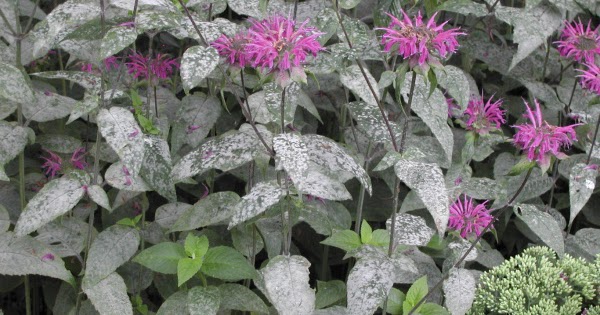
Whenever fungicides are used, however, be sure to read all application instructions and use the products safely and appropriately for the best results. Some home remedies, such as using diluted milk, whey or vinegar sprays, can also be effective for mild trouble spots. Depending on the exact fungus causing the infection, applications of sulphur, neem oil or potassium carbonate can be effective at eliminating powdery mildew. Using appropriate fungicides is an effective way to control powdery mildew. Instead, the plants should be safely burned or carefully bagged and disposed of without spreading the contamination. Removing and destroying all infected plants is critical, but the plant material should not be composted or else the spores can easily spread. When powdery mildew is spotted in the yard, quick action is necessary to limit the infection. Powdery mildew spreads through lightweight spores that easily travel along breezes or can be carried by contaminated gloves or garden tools.

:max_bytes(150000):strip_icc()/red-bee-balm-plants-2132327-08-b967bdbf732d4b43918706323570f9c2.jpg)
If one plant or type of plant becomes infected, quick control measures can easily keep it from spreading throughout the yard. Because several types of fungus contribute to this disease, the different varieties usually do not spread to radically different plants. More than 10,000 plants have been identified as being infected with different forms of powdery mildew, but that doesn't mean an entire garden or landscape will have trouble if the fungus appears.

Powdery mildew most frequently appears in spring and fall but can be present at any time when conditions are right to foster fungal growth.Ī wide variety of plants are susceptible to powdery mildew infections, from agricultural crops to garden plants to popular landscaping choices. They can even spread to greenhouses or indoor plants, as the tiny spores that spread the disease can pass through window screens or other tiny openings. The fungi that cause powdery mildew thrive in warmer, humid conditions, but can also be found in drier climates. In extreme cases, powdery mildew can kill a plant, but that is rare. Flower and fruit production will also decline, and this disease can have a grave impact on harvests. As the infection spreads, the plant weakens, and the leaves may turn yellow or brownish, dry out or even curl up, twist or distort. The mildew usually appears on the lower parts of a plant, but may appear anywhere, including on stems, buds, and fruit. Several types of fungi can create this disease, which first appears as white or grayish-white fuzzy or powdery spots on the upper surfaces of foliage – as if leaves were sprinkled with flour or talcum powder.

Powdery mildew is a fungal disease that can infect a wide variety of plants. By understanding more about this widespread disease, you can easily take steps to control it and keep powdery mildew from overwhelming your yard. Powdery mildew can seem like an intimidating hazard to your garden and landscape, but it does not have to devastate all your plants.
#Mold on bee balm plant how to#
Share "Powdery Mildew and How to Control It"


 0 kommentar(er)
0 kommentar(er)
